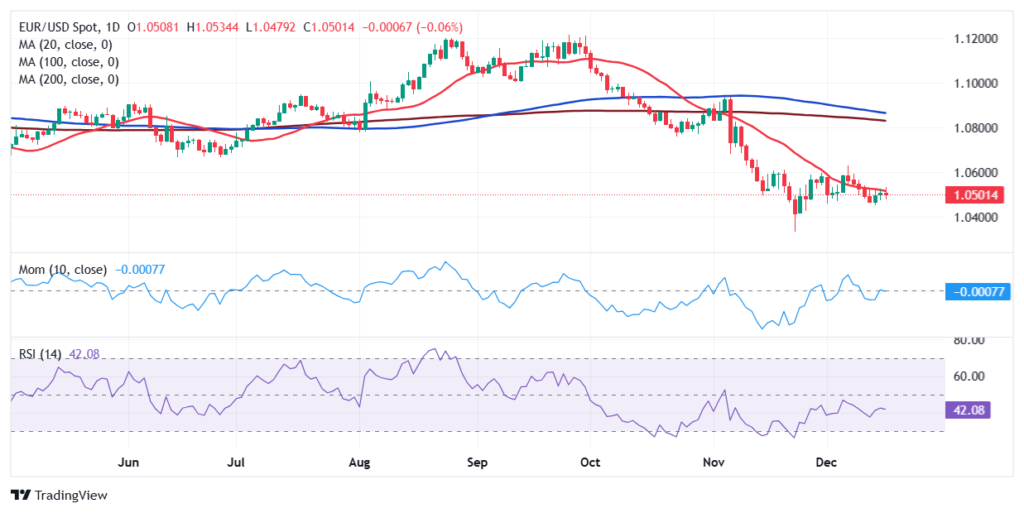Eurozona
The Dot Plot Eurozona has become an essential tool for understanding economic projections and influencing market movements across the European financial landscape. The European Central Bank (ECB) uses this unique economic visualization to present the forecasts of its policymakers, revealing their expectations for future interest rates and overall monetary policy. Understanding how this tool impacts market predictions and trends is crucial for anyone involved in trading, investing, or monitoring the European economy.
What is the Dot Plot Eurozona?

The Dot Plot Eurozona is a graphical representation used by the ECB to illustrate the expected future path of interest rates. It shows where each policymaker in the central bank expects rates to be at specific points in the future, usually over a short- to medium-term period. The dots represent individual projections from each policymaker, with the overall trend providing valuable insights into the ECB’s stance on monetary policy.
Unlike other central banks, such as the Federal Reserve, which uses the Dot Plot extensively, the Eurozona’s version is less frequently updated and can be interpreted differently based on the current economic situation. However, it remains a critical tool for market participants to assess the likely trajectory of interest rates and, consequently, the economic environment within the Eurozone.
How Does the Dot Plot Eurozona Affect Market Predictions?
The Dot Plot Eurozona plays a significant role in shaping market predictions by offering a clear picture of the ECB’s future policy intentions. By analyzing this plot, market participants can anticipate potential changes in interest rates, which directly influence investment decisions. Here’s how it affects the markets:
Interest Rate Expectations and Investment Strategies

The most immediate impact of the Dot Plot Eurozona on markets is its influence on interest rate expectations. When the ECB signals an interest rate hike through its projections, it often leads to a stronger Euro as investors adjust their portfolios in anticipation of higher returns on euro-denominated assets. On the other hand, if the ECB suggests a dovish stance, indicating no immediate rate hikes or even potential cuts, it can lead to a depreciation of the Euro.
Bond Markets and the Dot Plot
The bond market is particularly sensitive to the Dot Plot projections. A hawkish Dot Plot, indicating possible rate hikes, typically results in rising bond yields as investors demand higher returns for holding long-term debt. Conversely, a dovish forecast can lead to lower bond yields as expectations of rate cuts or stable low rates persist. Bond traders and institutional investors closely monitor the Dot Plot Eurozona to fine-tune their investment strategies and optimize returns based on anticipated interest rate movements.
Stock Markets and Economic Sentiment
Stock markets are another area impacted by the Dot Plot Eurozona. The expectations of future interest rates have a significant influence on corporate earnings forecasts. When the ECB indicates that rates will remain low or potentially fall, it often boosts market sentiment, as businesses can continue to borrow cheaply. This scenario is typically beneficial for growth stocks and sectors that rely on financing.
However, if the Dot Plot Eurozona reveals expectations of higher interest rates, it may dampen investor sentiment. Higher rates could lead to increased borrowing costs for companies and reduced consumer spending, affecting profits, particularly in interest-sensitive sectors such as real estate, utilities, and consumer goods.
Interpreting the Dot Plot Eurozona and Market Volatility
The Dot Plot Eurozona can also influence market volatility, especially when its projections differ significantly from market expectations. A shift in the central bank’s stance, whether toward a more hawkish or dovish position, can cause sharp movements in the currency, bond, and stock markets. Traders often react to these changes quickly, seeking to capitalize on perceived opportunities.
For instance, if the Dot Plot Eurozona unexpectedly signals a more aggressive tightening policy than anticipated, the Euro could surge, while stock prices might experience a decline as the cost of borrowing increases. Such reactions reflect the direct relationship between interest rate expectations and market behavior.
Unexpected Shifts and Market Surprises
Market participants tend to watch for surprises in the Dot Plot Eurozona. These surprises can often lead to substantial market movements. For example, if the ECB shifts its policy unexpectedly, such as indicating a rate hike sooner than anticipated, it could result in a rapid revaluation of the Eurozone’s financial assets. On the other hand, if the central bank adopts a more dovish tone than expected, it may lead to a decline in the Euro and a rally in certain asset classes like equities and bonds.
Global Impact of the Dot Plot Eurozona on International Markets
While the Dot Plot Eurozona primarily influences markets within the European Union, its impact can also ripple across the globe. The Eurozone is a major economic bloc, and any shift in its monetary policy can affect global capital flows, exchange rates, and trade relationships.
For instance, a hawkish stance from the ECB, signaling that rates will rise soon, could lead to capital inflows into the Eurozone from other regions. This may strengthen the Euro and influence global trade patterns. Similarly, if the ECB maintains a dovish stance, it can weaken the Euro, affecting trade relations and even pushing other central banks to adjust their monetary policies to remain competitive.
The Role of Market Expectations and Economic Data
Market expectations often form the foundation for interpreting the Dot Plot Eurozona. Economic data such as inflation, unemployment rates, and GDP growth play a crucial role in shaping ECB projections. If economic indicators suggest strong growth and rising inflation, the ECB may project interest rate hikes in the Dot Plot Eurozona, which can influence both short-term and long-term market predictions.
LuckHunter Cryptocurrency Predictions: A Comprehensive Analysis
Conversely, weak economic data, such as lower-than-expected inflation or economic slowdown, could cause the ECB to adopt a more cautious stance, leading to projections of lower interest rates or even accommodative policies to support growth.
Inflation and the Dot Plot
Inflation is a critical factor in shaping the Dot Plot Eurozona. The ECB’s primary mandate is to maintain price stability, targeting an inflation rate of around 2%. When inflation rises above target levels, the ECB may tighten monetary policy, as seen in a hawkish Dot Plot Eurozona. This shift influences markets, especially those reliant on price stability, such as fixed-income investors.
Conclusion
The Dot Plot Eurozona serves as a vital tool for assessing the future direction of interest rates and the overall monetary policy stance of the European Central Bank. It provides market participants with essential insights into the ECB’s policy intentions, which directly influence market predictions and trends. By understanding the Dot Plot Eurozona, investors and analysts can better anticipate potential shifts in interest rates and adjust their strategies accordingly. As a result, the Dot Plot Eurozona remains an indispensable tool for navigating the complex and ever-changing landscape of the Eurozone economy.


 Bitcoin
Bitcoin  Ethereum
Ethereum  XRP
XRP  Tether
Tether  Solana
Solana  USDC
USDC  Dogecoin
Dogecoin  Cardano
Cardano  Lido Staked Ether
Lido Staked Ether  TRON
TRON  Chainlink
Chainlink  Wrapped Bitcoin
Wrapped Bitcoin  Avalanche
Avalanche  Wrapped stETH
Wrapped stETH  Sui
Sui  Stellar
Stellar  Hedera
Hedera  Toncoin
Toncoin  Shiba Inu
Shiba Inu  LEO Token
LEO Token  Hyperliquid
Hyperliquid  WETH
WETH  Litecoin
Litecoin  Bitget Token
Bitget Token  Polkadot
Polkadot  USDS
USDS  Bitcoin Cash
Bitcoin Cash  Ethena USDe
Ethena USDe  Uniswap
Uniswap  Wrapped eETH
Wrapped eETH  MANTRA
MANTRA  Ondo
Ondo  Pepe
Pepe  NEAR Protocol
NEAR Protocol  Mantle
Mantle  WhiteBIT Coin
WhiteBIT Coin  Monero
Monero  Aave
Aave  Official Trump
Official Trump  Aptos
Aptos  Internet Computer
Internet Computer  Dai
Dai  Ethereum Classic
Ethereum Classic  Cronos
Cronos  OKB
OKB  Jupiter
Jupiter  Bittensor
Bittensor